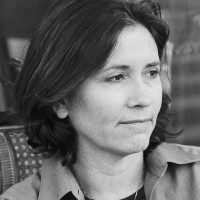The landscape of a city can be mapped in space, but also in time, and that is what Kate Walbert does with The Sunken Cathedral. Walbert follows her characters through New York City and unpacks their personal histories, interweaving distinct narratives to reveal the complexity of contemporary urban experience.
At the center of the novel is Marie, an octogenarian widow who, together with her friend of many decades, Simone, navigates a New York very different from the one they knew as young French immigrants raising their children in the wake of World War II. Over and over again, Marie and Simone are pushed to redefine themselves. Identity is the work of a lifetime, as we learn also through Marie’s upstairs tenant, Elizabeth, a poet and mother whose sense of self is challenged by an encounter at her son’s school.
Casting shadow over everything is the threat of climate change and its devastating effect. Storms have come and others loom, promising to redirect the lives of all they touch. Past, present, and future are in constant dialogue in The Sunken Cathedral, and the result is a tapestry as rich and intricate as the mind itself.
I spoke with Kate Walbert in Manhattan about the city she calls home, the place of history in her fiction, and how the footnotes that define The Sunken Cathedral came into being.
***
The Rumpus: I’ve visited New York in your fiction many times but this novel engages at a different level with the City. Urban life is what brings the characters together. I was wondering if you could talk a little bit about your relationship to New York and also a little about how you thought about New York as you were writing.
Kate Walbert: Someone asked me recently, ‘What’s your New York?’ which is really another way of asking this same question. And I think maybe what people love about living in New York, about living in any city, actually, is how often the definition or answer to that question, changes. New York as a parent is different than it was for me as a graduate student. And New York as a young professional is different than it is to be a writer who slinks around the city looking for a warm chair to do her work. 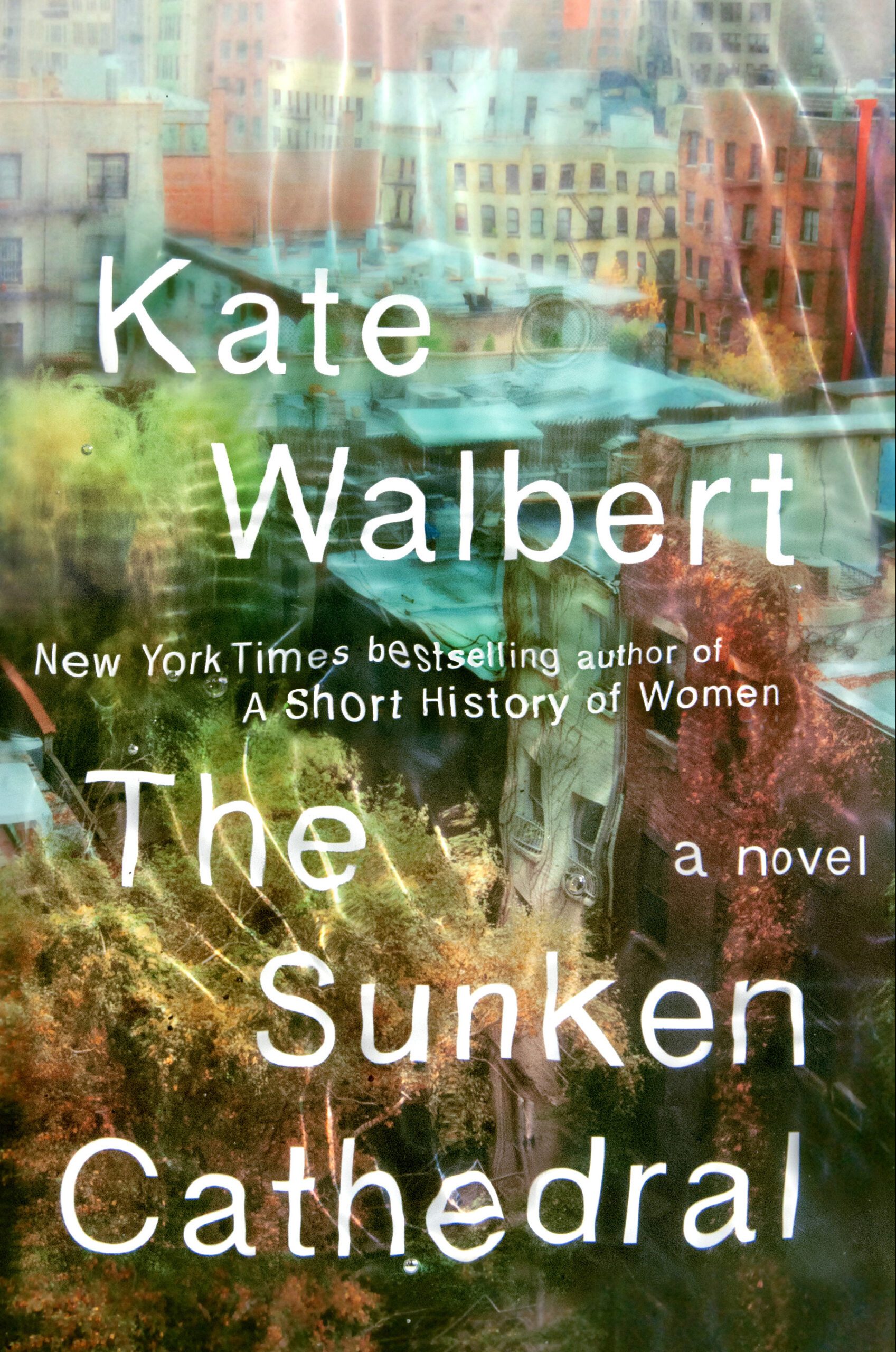 It’s probably not wrong to say that the last fifteen years and certainly 1999 to 2011, the years I lived in Chelsea, have been some of the most transformative in the history of the city—given 9/11, given the changes to everything as a result of 9/11. And it wasn’t just 9/11 and its aftermath but also the economic downturn and then the huge influx of money and the construction boom—specifically for the book the Highline in Chelsea, although there are examples of major construction projects everywhere in the city. But early in the writing of the book I realized that New York was like a separate character for this story, and so I guess I began to think about it in a different way, to try to define it a little more specifically, to pin it to a moment. I didn’t consciously set out to write about my old Chelsea neighborhood, but I had moved out and missed it.
It’s probably not wrong to say that the last fifteen years and certainly 1999 to 2011, the years I lived in Chelsea, have been some of the most transformative in the history of the city—given 9/11, given the changes to everything as a result of 9/11. And it wasn’t just 9/11 and its aftermath but also the economic downturn and then the huge influx of money and the construction boom—specifically for the book the Highline in Chelsea, although there are examples of major construction projects everywhere in the city. But early in the writing of the book I realized that New York was like a separate character for this story, and so I guess I began to think about it in a different way, to try to define it a little more specifically, to pin it to a moment. I didn’t consciously set out to write about my old Chelsea neighborhood, but I had moved out and missed it.
And that’s how the book began. I was thinking about where I had lived—the street where I lived, the brownstone, the apartment that I rented with my family, from a woman who has owned the brownstone for over sixty years. And I found myself going back to that apartment—and to her apartment—and imagining a few characters. One character inspired by her—not the details of her life at all, but inspired by the fact that here was this woman in her late ’80s, living in a place she had lived for sixty years. I found myself thinking about what Chelsea must have been when she arrived. She always jokes that her husband said they were going to be pioneers. And now you would never think about the neighborhood in that way. So as I was writing, I was thinking about what her New York was then, and what it continues to be, and then, I suppose I was doing what you do when you write: looking at everything through the scrim of your own personality, and your own experience. Which is not to say writing autobiographical fiction, but just how my own experience comes into play, a little bit off kilter, a little bit sideways.
Rumpus: I think it’s so interesting that you say that there was this older woman figure you were thinking about at the early stages of the book because in this book—and in so many of your books—there’s a grappling with an older generation and their experiences.
Walbert: You’re right. I actually went older in this book! I hadn’t thought about that. I so often write about my mother’s generation and now I’ve scaled it up a decade or two.
Rumpus: When the younger characters in the book interact with Marie and Simone, who we know have survived World War II, there’s this awareness of the weight of the past that they carry with them. And it made me think about the role of history in your fiction in a larger sense—does it begin with personal experience? Does it begin with research?
Walbert: It doesn’t begin with the history itself. I think it begins more with questions about the history. For instance, with The Gardens of Kyoto I knew a very scant detail of my father’s cousin who was killed on Iwo Jima at the age of seventeen and so, in some ways, I set out to write the history that I didn’t know, and the ways in which his death reverberated 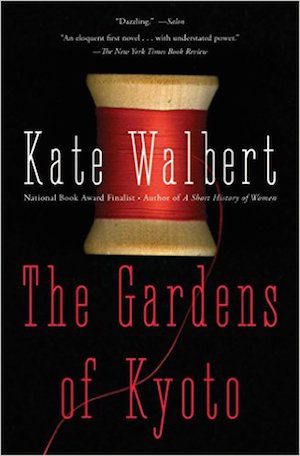 throughout the lives of his family. It doesn’t come from having an idea about what I want to write and then researching that idea and getting all the correct historical details to put into the story. It begins as a kind of backing into history, a way of approaching history from a more ordinary perspective.
throughout the lives of his family. It doesn’t come from having an idea about what I want to write and then researching that idea and getting all the correct historical details to put into the story. It begins as a kind of backing into history, a way of approaching history from a more ordinary perspective.
In the case of The Sunken Cathedral, the story that emerges through the footnotes is specific to World War II, and yet, at the same time, it is very generalized and could have happened during any war, at any time, because it’s really just the story of a family being banished from their home. The home is key. Some of the specifics come from a friend’s mother’s story that I’ve always found riveting, but when you’re approaching history that is personal history—from friends, or from family, or that you’ve encountered in some chance way—usually there are just a few details that spark a level of curiosity—for whatever reason they hang around in your mind. And you don’t know why they’re hanging around in your mind until one day you’re writing that detail into a story. And suddenly it’s not random any more—it’s like a missing puzzle piece that’s helping to show you what the whole picture will be. From that historical detail you create an imagined story.
Rumpus: You mentioned the footnotes, which I want to return to. When I started to try to make sense of them for myself, the thing I was really pushed to consider was disruption and the role it plays in the book. A lot of what the novel appears to be asking is: what disrupts a life?
There are the big disruptive events. In the past, there’s World War II, and then hanging over everything there’s the threat of the future because we know, in this book, that climate change is a reality, and that it will redirect peoples’ lives. But beyond those big events there are smaller disruptions on the personal level—the loss of a spouse, or a loved one. I was wondering if these kinds of ideas were at play for you as you conceived of the footnotes?
Walbert: The footnotes came with the writing of the book. And at first I didn’t get quite why. I’ve said that they insisted upon themselves, and they really did. I didn’t necessarily want to write a book with footnotes, but it became clear that the disruption of the footnote was very much the point. And once I realized this, I liked what they were doing—not just the disruption, but the interruption, asking the reader to look at the bottom of the page, to literally break off from the narrative and be elsewhere. I found that’s what gave them power for me, and that’s also what felt true about them and somehow made them like life.
But I love your word disruption. There are the great historical disruptions that have happened in the book, these seismic shifts. Very early on, we have two widows: Simone and Marie. One [Simone] has lost her husband recently, one [Marie] has lost her husband many years prior, and yet those years that have passed don’t make a difference in Marie’s life. One of the first footnotes is that Marie finds it almost unbearable that she’s alive and her husband is dead. And that’s a thought so abstract—so impossible to comprehend—that it stays in a footnote, submerged. What do you do with it?  There’s nothing you can do with it, no sense to be made. Later on she talks about this abstraction again: where did all of his ideas go? Where did he go? Not just the body, but everything that comprised him, all of his learning. He was such a presence in her life and now he’s gone.
There’s nothing you can do with it, no sense to be made. Later on she talks about this abstraction again: where did all of his ideas go? Where did he go? Not just the body, but everything that comprised him, all of his learning. He was such a presence in her life and now he’s gone.
So you could say that’s the most dramatic disruption, but there are also the daily interruptions that are much more common in our kind of harried, hurried, lives. The very contemporary interruptions by the devices we carry in our hands that –and I hate to use the word “realities” but there it is—create these multiple realities. There’s the reality of sitting here and having this conversation with you, but then also if I get a text from someone she is suddenly here too, in an odd way.
Another friend who read the book said the footnotes reminded her of when she’s in the middle of a conversation with someone and a bird flies by and the presence of the bird takes her someplace entirely elsewhere for a nanosecond before she’s back in the conversation. So I think the footnotes were a way to try to pin down what all that feels like, all those interruptions and disruptions and insistent histories.
Rumpus: There was something that Simone says at one point: “Do you think we are ever truly old?” I mean, inside ourselves, old? Ready to be old?” In the moment of the reading it struck me as a profound reflection on aging, but now as we talk about disruption it reminds me of what stays the same. Despite change, how we regard ourselves, the topics the mind circles around, can be steady and constant.
Walbert: That’s right—and then there are the constants that somehow live outside of time. Back to the example of Marie, who has lost her husband many years prior to the opening of the novel, and yet his presence is still always felt. Certain memories or moments for her, for example how she would wait for him on the stoop of their brownstone and how, when he turned the corner, the light, the sunset (which is always beautiful in Chelsea), would reflect behind him, are repeated again and again for her.
There’s a great line from the Eudora Welty memoir One Writer’s Beginnings: “Emotions do not grow old.” It’s such a simple concept but it’s so profound because it’s true—emotions don’t age.
Rumpus: There are several octogenarian characters in this novel, and there are so rarely older women in fiction. There seem to be a lot of sweet, grandfatherly types out there in the world of fiction, but rarely these full-range, older women you’ve created.
Walbert: One of the early reviews picked up on that, and it hadn’t dawned on me that I was doing something unusual. It certainly wasn’t this altruistic mission to depict the lives of the old!
Rumpus: I think it’s a remarkable testament to the depth of your empathy. The characters themselves are a reminder that the life of the mind and the body continues.
Walbert: Thank you. The work of living is not done [at that age], and in fact it’s so much more complicated because there’s so much more history. Marie, Simone, and Sid are like comets, they have these long tails behind them, and that’s what was interesting to me.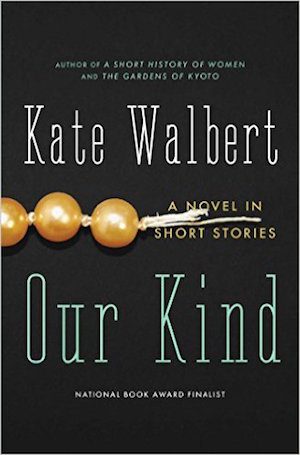 You can’t imagine your way into the life of an 80-something year old without having a whole lot of history to work through. I don’t mean I feel as a writer that it’s important to check off writing the backstory, so you can find a character’s motivation or something—no—what I mean is that when you try to fully imagine your way into a character then the past is there too, it has to be, and if it is then it does what we’ve been talking about: it distorts, influences, obscures the perception of the present.
You can’t imagine your way into the life of an 80-something year old without having a whole lot of history to work through. I don’t mean I feel as a writer that it’s important to check off writing the backstory, so you can find a character’s motivation or something—no—what I mean is that when you try to fully imagine your way into a character then the past is there too, it has to be, and if it is then it does what we’ve been talking about: it distorts, influences, obscures the perception of the present.
I’m not there yet, but I’m closer than I was, and I know from my own experience how history interrupts, and regret interrupts, and everyone you’ve ever known, and loved, somehow interrupts. And that it’s not as simple as: we’re here in 2015, sitting here, having this conversation. Life is not experienced that superficially.
Rumpus: One of the things that just blows me away about The Sunken Cathedral is that you’ve written a book that is about the past, and the future, and yet it’s very much grounded in the present moment. We get the texture of daily life for all of the characters—we know what it’s like to walk through their New York, and yet the moments they’ve lived already and the moments to come are there, too. You’ve mingled past and present many times before, but I was wondering if you’ve ever before explored the future in this way?
Walbert: No. Not exactly. I think sometimes sitting down to write there are a lot of straitjackets that we put on, unconsciously, about time, and tense, and following a certain narrative arc. Every once in a while, though, you write a reckless sentence, and for a moment you break out of the straightjacket and it feels exhilarating. I don’t know at what point I started to jump ahead and see where the characters would go without worrying that I had to take them there but I know when I did it felt right, and I found that better approximated how I experience time. I think that’s what everyone who’s trying to make something asks themselves: How do I replicate—on paper, on canvas, in song, on the stage—how it feels for me? And you never really can but you try.
Rumpus: You’re a novelist but you’re also a story writer and a playwright. What has working in other forms allowed you? And how do you know which form an idea is right for, or is that just instinctual?
Walbert: The plays that I’ve written have tended to come out of specific ideas I want to explore. So I’ll have an idea about a story that is interesting to me, and I feel like I can work out that idea in a play—not always successfully, I’m still very much a novice when it comes to writing plays.
With fiction, I never have an idea. With fiction it’s much more serendipitous. Also often I return to stories I think I’ve finished, and they lead to my novels—probably because I’m lousy with material, but maybe also because there’s always more to ask.
For instance, with The Sunken Cathedral I originally thought I was writing a story about Marie and Simone. Then I wrote a second story about Elizabeth, the younger character, at which point I decided I was going to write two novellas, one based on Marie and Simone, and one based on Elizabeth. I just started writing, and then those novellas began to grow together and became the book. And that’s a very typical scenario for me.
But my novels keep getting shorter and shorter! I love the novella; I love short form. I love the work of Penelope Fitzgerald. There’s a kind of a book—Julian Barnes writes them, Hilary Mantel when she writes short, Muriel Spark’s The Prime of Miss Jean Brodie, Denis Johnson’s Train Dreams—that’s just so elegant in its construction. I’m drawn to things that feel very honed. I love economy of form. If I were a filmmaker, I would be making shorts.
I would love to write something that felt perfectly constructed, perfectly constrained, and yet somehow held everything—like when you look at a drop of water through a microscope and see the world. That’s my goal.
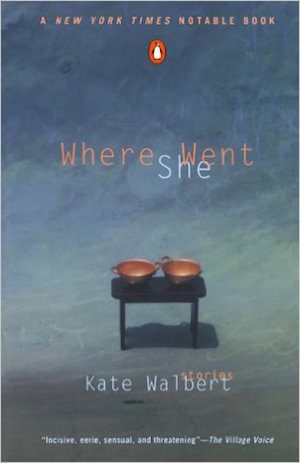 Rumpus: Were there the books that were touchstones as you wrote The Sunken Cathedral?
Rumpus: Were there the books that were touchstones as you wrote The Sunken Cathedral?
Walbert: Not really. I don’t tend to read fiction when I’m in the thick of writing something. I’ll read memoir—Dorothy Day’s The Long Loneliness is one I read recently, or novels that are really different from anything I’m working on.
Along those lines I’ll read a little bit of non-fiction, for instance I read a fascinating story, Elephant Company, about a man in Burma who saved many, many lives using his elephants in World War II, while working on this book. But no matter what you’re reading you’re always looking as a writer. It’s hard to ever read purely.
Rumpus: Elizabeth, who has a son, becomes obsessed with a project at her son’s school. Parents and students are asked to create a “Who We Are” story, with a family photo, and a little narrative. Elizabeth’s interest in the “Who We Are” stories made me think about how desperate we are all are to know the people around us, and how the images we project complicates that. New York poses its own challenges, because we’re surrounded by so many people, but how much can we know about them?
Walbert: We live in an increasingly visual culture, where people are talking about their identities and shaping how other people see them all the time. I think this is what social media asks of us, in a sense—to project a certain picture of ourselves. And that comes with decision-making. You have to decide: how am I going to shape my own story? Who am I going to be? And that’s endlessly fascinating to me as a writer—how other people do it, whether they’re doing it truthfully, or not so truthfully. Both are interesting.
Elizabeth is a writer, she’s a poet. I think she’s drawn to the project because she’s looking at how the people around her are defining themselves in a way that feels composed and assured, and she’s wondering how she might define herself in this way. She’s also asking: am I who I say I am? And are they?
New York is such a great place to consider these questions because there are so many chance encounters here with so many different types of people, different stories. It’s like that kid’s game where you make up the history of the person passing you by.
